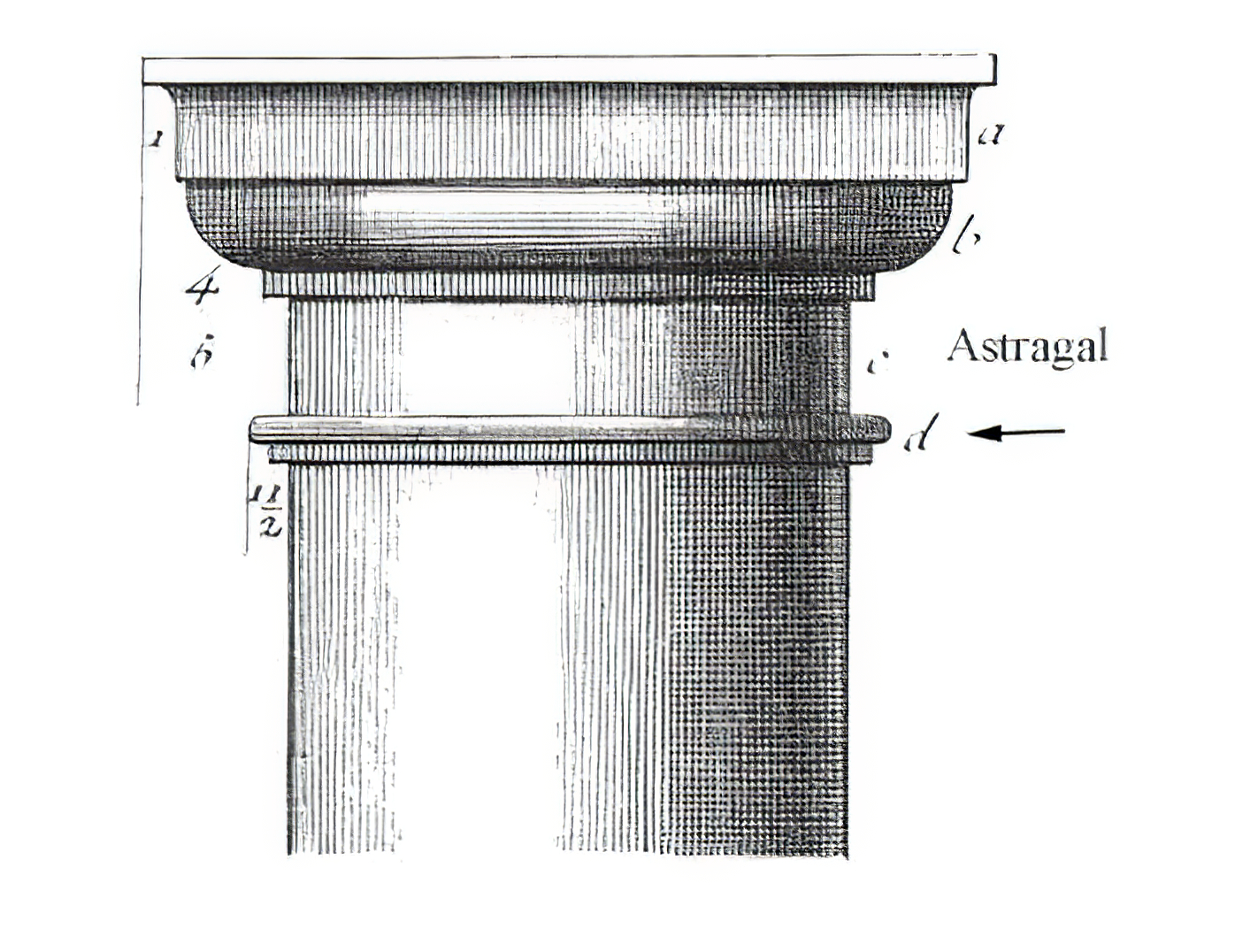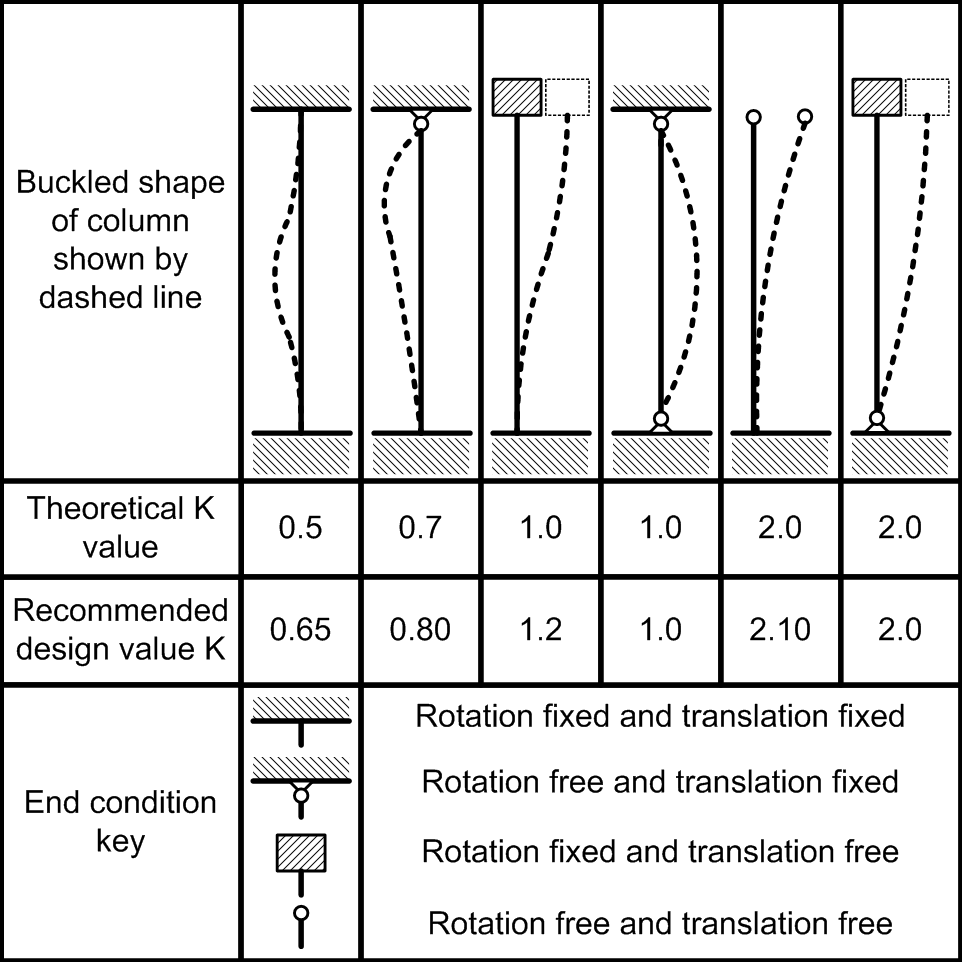|
Annulet (architecture)
An annulet is a small square component in the Doric capital, under the quarter-round. It is also called a fillet or listel, although ' and ' are also more general terms for a narrow band or strip, "a narrow band in architecture: fillet" such as the ridge between flutes. An annulet is also a narrow flat architectural moulding, common in other parts of a column, ''viz.'' the bases, as well as the capital. It is so called, because it encompasses the column round. In this sense, ''annulet'' is frequently used for baguette or little astragal An astragal is a Moulding (decorative), moulding profile composed of a half-round surface surrounded by two flat planes (Annulet (architecture), fillets). An astragal is sometimes referred to as a miniature torus. It can be an architecture, a .... Image:Hammond-Harwood House annulet HABS MD,2-ANNA,18-27.jpg, Carved wood annulet References * Columns and entablature Ornaments (architecture) {{architecturalelement-stub ... [...More Info...] [...Related Items...] OR: [Wikipedia] [Google] [Baidu] |
Doric Order
The Doric order is one of the three orders of ancient Greek and later Roman architecture; the other two canonical orders were the Ionic and the Corinthian. The Doric is most easily recognized by the simple circular capitals at the top of the columns. Originating in the western Doric region of Greece, it is the earliest and, in its essence, the simplest of the orders, though still with complex details in the entablature above. The Greek Doric column was fluted, and had no base, dropping straight into the stylobate or platform on which the temple or other building stood. The capital was a simple circular form, with some mouldings, under a square cushion that is very wide in early versions, but later more restrained. Above a plain architrave, the complexity comes in the frieze, where the two features originally unique to the Doric, the triglyph and gutta, are skeuomorphic memories of the beams and retaining pegs of the wooden constructions that preceded stone Doric tem ... [...More Info...] [...Related Items...] OR: [Wikipedia] [Google] [Baidu] |
Capital (architecture)
In architecture, the capital () or chapiter forms the topmost member of a column (or a pilaster). It mediates between the column and the load thrusting down upon it, broadening the area of the column's supporting surface. The capital, projecting on each side as it rises to support the abacus, joins the usually square abacus and the usually circular shaft of the column. The capital may be convex, as in the Doric order; concave, as in the inverted bell of the Corinthian order; or scrolling out, as in the Ionic order. These form the three principal types on which all capitals in the classical tradition are based. The Composite order was formalized in the 16th century following Roman Imperial examples such as the Arch of Titus in Rome. It adds Ionic volutes to Corinthian acanthus leaves. From the highly visible position it occupies in all colonnaded monumental buildings, the capital is often selected for ornamentation; and is often the clearest indicator of the architec ... [...More Info...] [...Related Items...] OR: [Wikipedia] [Google] [Baidu] |
Quarter-round
A quarter round is a convex Molding (decorative), molding whose cross section is a quarter circle. It is one form of ovolo. A variation is a base shoe, a quarter of an ellipse. Most quarter round is of small gauge and relatively flexible. It is typically used as a decorative build-up element in mantels and other architectural features, and at the lower edge of baseboard to hide any gaps between it and a floor. Base shoe is used similarly in flooring applications. Quarter round is produced in hardwood, softwood, engineered wood, and extruded plastic. References Floors Architectural elements {{architecturalelement-stub ... [...More Info...] [...Related Items...] OR: [Wikipedia] [Google] [Baidu] |
Fluting (architecture)
Fluting in architecture and the decorative arts consists of shallow Groove (joinery), grooves running along a surface. The term typically refers to the curved grooves (flutes) running vertically on a column shaft or a pilaster, but is not restricted to those two applications. If the scoops taken out of the material meet in a sharp ridge, the ridge is called an arris. If the raised ridge between two flutes appears flat, the ridge is a . Fluted columns are common in the tradition of classical architecture but were not invented by the ancient Greeks, but rather passed down or learned from the Mycenaeans or the Egyptians. Especially in stone architecture, fluting distinguishes the column shafts and pilasters visually from plain masonry walls behind.Lawrence, 101 Fluting promotes a play of light on a column which helps the column appear more perfectly round than a smooth column. As a strong vertical element it also has the visual effect of minimizing any horizontal joints.Jones, M ... [...More Info...] [...Related Items...] OR: [Wikipedia] [Google] [Baidu] |
Architecture
Architecture is the art and technique of designing and building, as distinguished from the skills associated with construction. It is both the process and the product of sketching, conceiving, planning, designing, and construction, constructing buildings or other Structure#Load-bearing, structures. The term comes ; ; . Architectural works, in the material form of buildings, are often perceived as cultural symbols and as work of art, works of art. Historical civilizations are often identified with their surviving architectural achievements. The practice, which began in the Prehistory, prehistoric era, has been used as a way of expressing culture by civilizations on all seven continents. For this reason, architecture is considered to be a form of art. Texts on architecture have been written since ancient times. The earliest surviving text on architectural theory, architectural theories is the 1st century AD treatise by the Roman architect Vitruvius, according to whom a good bui ... [...More Info...] [...Related Items...] OR: [Wikipedia] [Google] [Baidu] |
Molding (decorative)
Moulding (British English), or molding (American English), also coving (in United Kingdom, Australia), is a strip of material with various profiles used to cover transitions between surfaces or for decoration. It is traditionally made from solid milled wood or plaster, but may be of plastic or reformed wood. In classical architecture and sculpture, the moulding is often carved in marble or other stones. In historic architecture, and some expensive modern buildings, it may be formed in place with plaster. A "plain" moulding has right-angled upper and lower edges. A "sprung" moulding has upper and lower edges that bevel towards its rear, allowing mounting between two non-parallel planes (such as a wall and a ceiling), with an open space behind. Mouldings may be decorated with paterae as long, uninterrupted elements may be boring for eyes. Types Decorative mouldings have been made of wood, stone and cement. Recently mouldings have been made of extruded polyvinyl chl ... [...More Info...] [...Related Items...] OR: [Wikipedia] [Google] [Baidu] |
Column
A column or pillar in architecture and structural engineering is a structural element that transmits, through compression, the weight of the structure above to other structural elements below. In other words, a column is a compression member. The term ''column'' applies especially to a large round support (the shaft of the column) with a capital and a base or pedestal, which is made of stone, or appearing to be so. A small wooden or metal support is typically called a '' post''. Supports with a rectangular or other non-round section are usually called '' piers''. For the purpose of wind or earthquake engineering, columns may be designed to resist lateral forces. Other compression members are often termed "columns" because of the similar stress conditions. Columns are frequently used to support beams or arches on which the upper parts of walls or ceilings rest. In architecture, "column" refers to such a structural element that also has certain proportional and decorative f ... [...More Info...] [...Related Items...] OR: [Wikipedia] [Google] [Baidu] |
Molding (decorative)
Moulding (British English), or molding (American English), also coving (in United Kingdom, Australia), is a strip of material with various profiles used to cover transitions between surfaces or for decoration. It is traditionally made from solid milled wood or plaster, but may be of plastic or reformed wood. In classical architecture and sculpture, the moulding is often carved in marble or other stones. In historic architecture, and some expensive modern buildings, it may be formed in place with plaster. A "plain" moulding has right-angled upper and lower edges. A "sprung" moulding has upper and lower edges that bevel towards its rear, allowing mounting between two non-parallel planes (such as a wall and a ceiling), with an open space behind. Mouldings may be decorated with paterae as long, uninterrupted elements may be boring for eyes. Types Decorative mouldings have been made of wood, stone and cement. Recently mouldings have been made of extruded polyvinyl chl ... [...More Info...] [...Related Items...] OR: [Wikipedia] [Google] [Baidu] |
Astragal
An astragal is a Moulding (decorative), moulding profile composed of a half-round surface surrounded by two flat planes (Annulet (architecture), fillets). An astragal is sometimes referred to as a miniature torus. It can be an architecture, architectural element used at the top or base of a column, but is also employed as a framing device on furniture and woodwork. The word "astragal" comes from the Greek for "ankle-joint", , '. On doors An astragal is commonly used to seal between a pair of doors. The astragal closes the clearance gap created by bevels on one or both mating doors, and helps deaden sound. The vertical member (molding) attaches to a stile on one of a pair of either sliding or swinging doors, against which the other door seals when closed. Exterior astragals are kerfed for weatherstripping. The weatherstripping at the bottom of garage doors is also referred to as an astragal. An astragal may also be known as a "meeting stile seal". It is sometimes confused wi ... [...More Info...] [...Related Items...] OR: [Wikipedia] [Google] [Baidu] |
Columns And Entablature
A column or pillar in architecture and structural engineering is a structural element that transmits, through compression, the weight of the structure above to other structural elements below. In other words, a column is a compression member. The term ''column'' applies especially to a large round support (the shaft of the column) with a capital and a base or pedestal, which is made of stone, or appearing to be so. A small wooden or metal support is typically called a ''post''. Supports with a rectangular or other non-round section are usually called '' piers''. For the purpose of wind or earthquake engineering, columns may be designed to resist lateral forces. Other compression members are often termed "columns" because of the similar stress conditions. Columns are frequently used to support beams or arches on which the upper parts of walls or ceilings rest. In architecture, "column" refers to such a structural element that also has certain proportional and decorative featur ... [...More Info...] [...Related Items...] OR: [Wikipedia] [Google] [Baidu] |








